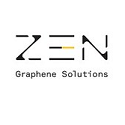
SPONSOR: ZEN Graphene Solutions: An emerging advanced materials and graphene development company with a focus on new solutions using pure graphene and other two-dimensional materials. Our competitive advantage relies on the unique qualities of our multi-decade supply of precursor materials in the Albany Graphite Deposit. Independent labs in Japan, UK, Israel, USA and Canada confirm this. Click here for more information
An international group of Russian and Japanese scientists recently developed a graphene-based material that might significantly increase the recording density in data storage devices, such as SSDs and flash drives. Among the main advantages of the material is the absence of rewrite limit, which will allow implementing new devices for Big Data processes.
The development of compact and reliable memory devices is an increasing need. Today, traditional devices are devices in which information is transferred through electric current. The simplest example is a flash card or SSD. At the same time, users inevitably encounter problems: the file may not be recorded correctly, the computer may stop “seeing” the flash drive, and to record a large amount of information, rather massive devices are required.
A promising alternative to electronics is spintronics. In spintronics, devices operate on the principle of magnetoresistance: there are three layers, the first and third of which are ferromagnetic, and the middle one is nonmagnetic. Passing through such a “sandwich” structure, electrons, depending on their spin, are scattered differently in the magnetized edge layers, which affects the resulting resistance of the device.
The control of information using the standard logical bits, 0 and 1, can be performed by detecting an increase or decrease in this resistance.
The international group of scientists from National University of Science and Technology MISIS (Russia) and National Institute for Quantum and Radiological Science and Technology (Japan) developed a material that can significantly increase the capacity of magnetic memory by increasing the recording density. The scientists used a combination of graphene and the semi-metallic Heusler alloy Co2FeGaGe.
“Japanese colleagues for the first time grew a single-atom layer of graphene on a layer of semi-metallic ferromagnetic material and measured its properties. The Japanese team, led by Dr. Seiji Sakai, conducts unique experiments, while our group is engaged in a theoretical description of the data obtained. Our teams have been working together for many years and have obtained a number of important results,” comments Pavel Sorokin, Sc.D. in Physics and Mathematics, head of the “Theoretical Materials Science of Nanostructures” infrastructure project at the NUST MISIS Laboratory of Inorganic Nanomaterials.
Previously, graphene was not used in magnetic memory devices as carbon atoms reacted with the magnetic layer, which led to changes in its properties. By careful selection of the Heusler alloy composition, as well as the methods of its application, it was possible to create a thinner sample compared to previous analogues. This, in turn, will significantly increase the capacity of magnetic memory devices without increasing their physical size.
Next, the scientists plan to scale the experimental sample and modify the structure.
Tags: #Additive, #AdvancedMaterials, #Aerogel, #Albany, #Battery, #Bulk, #Concrete, #Europe, #Evolution, #graphite, #Highpurity, #Sample